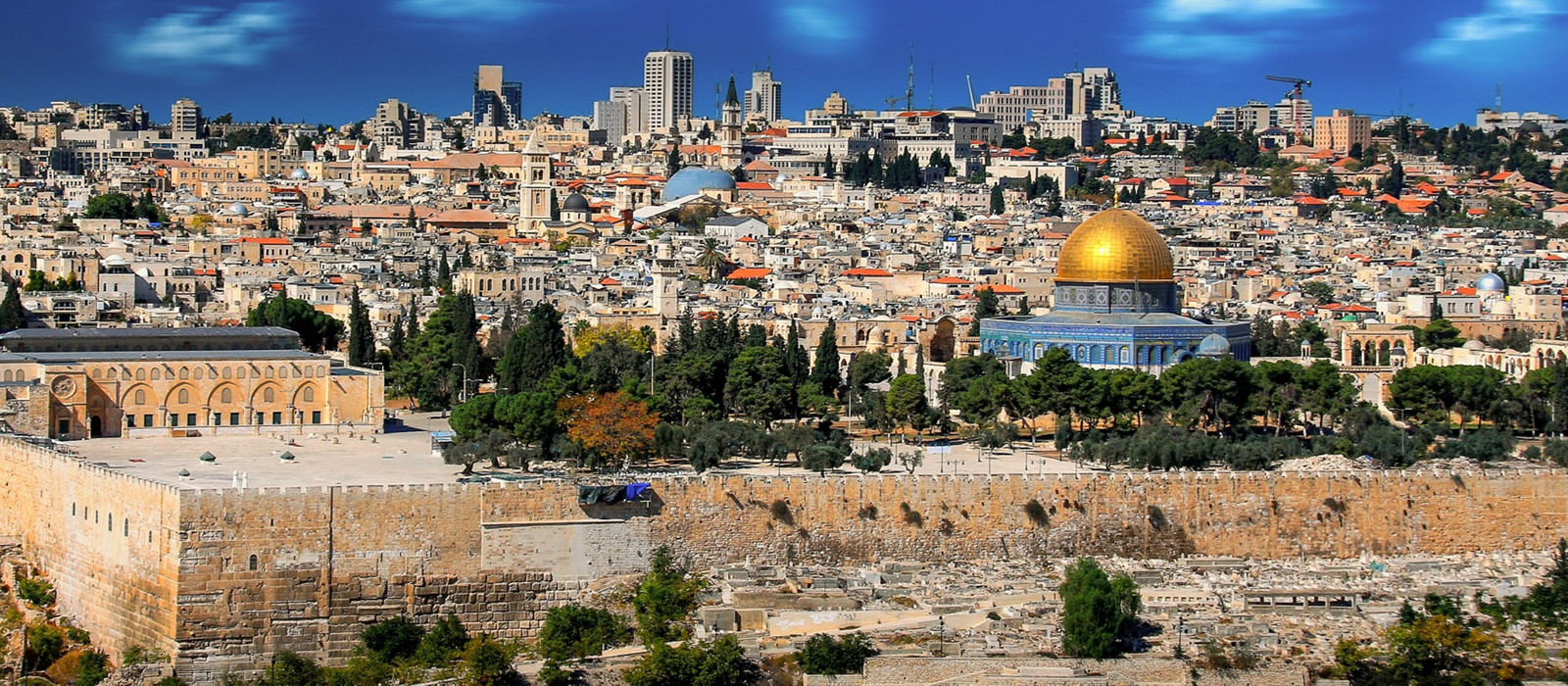“Pilate saith unto them, What shall I do then with Jesus which is called Christ? They all say unto him, Let him be crucified.” (Matthew 27:22)
Since the start of Christianity, there has been a disconnect between the Jews and the followers of the presumed messiah, Jesus. Jesus lived in the Second Temple period in Judea under the rule of Herod the Great and during a time of heavy Roman influence. Each religion has different views of Jesus and his life story, weather they believe in his prophetic words or not.
The old city of Jerusalem has a beautiful Muslim quarter that includes the Via Dolorosa. The Via Dolorosa translates to the way of suffering and take people through the streets following he stations of the cross that led to the crucifixion of Jesus. Pilgrims have been traveling the same path for centuries starting at Mount of Olives, the location of the last supper, the garden of Gethsemane, where Jesus was arrested, and through the Via Dolorosa to what is now the Church of the Holy Sepulcher in the Christian quarter. (Murphy-O’Connor. Page 37) This path however is not accepted by all. There was a divide between Latin Christians as to where the palace of the high priest sat, one placed it “on Mount Zion; the other places [it] north of the temple; in consequence, they followed completely different routes to the Holy Sepulchre. (Murphy-O’Connor. Page 37) If you watch the video attached, you see the utter beauty of the Holy Sepulchre and how each denomination has their space within the holy site. Pilgrimage is important for some as the spiritual impact of retracing the messiahs’ steps is a critical part of their devotion.
The Jewish traditions don’t have a lot to say about the arrival of a Messianic prophet but note that “he will be a descendant of King David, gain sovereignty over the land of Israel, gather the Jews there from the four corners of the earth, restore them to full observance of the Torah law and bring peace to the whole world.” (JVL. ND) The Jewish people believe that Jesus was not the son of God and the messiah as he did not fulfill thes e five principals, especially the sovereignty of Israel and world peace. The idea of a messianic prophet continues to prompt “Jews to work for tikkun olam (perfection of the world).” (JVL. ND) Throughout the years, “Christians have both supported and militated against the Zionist movement, showing interest and sympathy along with suspicion, antagonism, and rejection.” (Troen and Fish. Page 280) It was the Jewish people that condemned Jesus for claiming to be the king of the Jews and asked Pilate to put him to death. (Matthew 27) The followers of Jesus would become Christians and separate themselves fully from the Jews over time.
Another major western religion, Islam, also has ties to the Christian religious traditions. In Islam, they do believe that Jesus was a prophet, but not that he was the son of god. (Glassé and Smith. Page 239) We read Cyril Glassé when he says that “the doctrine that Jesus is a Divine incarnation, and that his crucifixion and resurrection have redeemed the sins of mankind…can only be explained in the mind of the Muslim as some extraordinary historical error of interpretation or understanding.” (Glassé and Smith. Page 240) The Via Dolorosa is believed by Christians to be the final moments of Jesus’ life where as the Islamic view is that Jesus was saved from crucifixion at the last minute and that is why he was risen. (Reynolds. Page 251)
The split in the faith of Jesus has caused tensions among people across faiths. For Christians, antisemitism is stemmed from the fact that the Jewish people were the ones who demanded the crucifixion of Jesus Christ. Islamic views of the resurrections leave many Christians to feel uneasy as they do not believe that Jesus rose from the dead. The Christian pilgrimage to the Holy Sepulcher causes traffic within the community of Jerusalem. Jesus of Nazareth is known in all three major western religions for different reasons. The Messiah, a Prophet or a Jew, he has been a force that changed the course of modern western religions for Christians, Jews and Muslims.
By: Anna Séguin
Bibliography:
Troen, S. Ilan, and Rachel Fish. Essential Israel essays for the 21st century. Bloomington: Indiana Unviversity Press. Kindle Edition. 2017.
King James Bible. Matthew 27. 1-30. https://www.biblegateway.com/passage/?search=Matthew+27&version=KJV
Jewish Virtual Library. The Messiah. Accessed May 11th, 2018. http://www.jewishvirtuallibrary.org/the-messiah
Murphy-O’Connor, Jerome. The Holy Land: An Oxford Archaeological Guide from Earliest Times to 1700. Oxford Press. 2008. Page 36-40
Glassé, Cyril and Huston Smith. The New Encyclopedia of Islam. Walnut Creek. 2001.
Reynolds, Gabriel. The Muslim Jesus: Dead or Alive?. Bulletin of SOAS, 72(2). 2009. Page 251.
Media:
Séguin, Anna. Israel 2018. Photography. 2018.
Steves, Rick. Jerusalem, Israel: Via Dolorosa and Church of the Holy Sepulchre. Film. https://www.youtube.com/watch?v=yezjLhCXuzU
